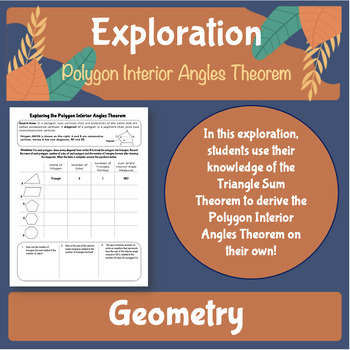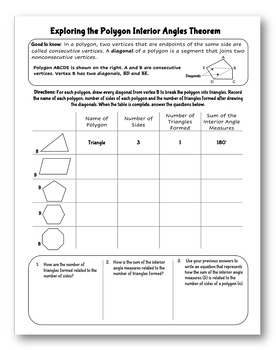Polygon Interior Angle Sum Theorem Exploration
- PDF
Description
This is an activity for students to work through with a partner, or on their own. Students should have previous knowledge of the Triangle Sum Theorem. The activity explains to students the meaning of a diagonal and has them draw diagonals in various polygons, recording the number of triangles the polygons are split into.
After completing the table, the activity asks the following questions:
1. How are the number of triangles formed related to the number of sides?
2. How is the sum of the interior angle measures related to the number of triangles formed?
3. Use your previous answers to write an equation that represents how the sum of the interior angle measures (S) is related to the number of sides of a polygon (n).
By working through this activity, students will gain a deeper understanding of why the Polygon Interior Angle Sum Theorem works.



